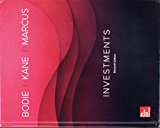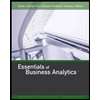
Investments, 11th Edition (exclude Access Card)
11th Edition
ISBN: 9781260201543
Author: Zvi Bodie Professor; Alex Kane; Alan J. Marcus Professor
Publisher: McGraw-Hill Education
expand_more
expand_more
format_list_bulleted
Question
Chapter 4, Problem 17PS
Summary Introduction
To calculate: The total fees paid to the fund’s investment managers during the year, where New Fund’s expense ratio was 1.1% and management fee was 7%, and to calculate the administrative expenses.
Introduction:Investment manager is the manager who handles investment portfolios and administrative expenses are expenses which are acquired by the firm.
Expert Solution & Answer
Want to see the full answer?
Check out a sample textbook solution
Students have asked these similar questions
Required:
Suppose you conduct currency carry trade by borrowing $1 million at the start of each year and investing in the New Zealand dollar for
one year. One-year interest rates and the exchange rate between the U.S. dollar ($) and New Zealand dollar (NZ$) are provided below
for the period 2000 - 2009. Note that interest rates are one-year interbank rates on January 1st each year, and that the exchange rate
is the amount of New Zealand dollar per U.S. dollar on December 31 each year. The exchange rate was NZ$1.9090 per $ on January 1,
2000. Fill out columns (4) - (7) and compute the total dollar profits from this carry trade over the ten-year period. Also, assess the
validity of uncovered interest rate parity based on your solution of this problem. You are encouraged to use the Excel spreadsheet
software to tackle this problem.
Note: Negative value should be entered with a minus sign. Enter profit value answers in dollars, rather than in millions of dollars.
Do not round intermediate…
Which of the following is considered a capital budgeting decision?A) Deciding how to finance a new projectB) Deciding whether to replace a machineC) Deciding how to manage cash reservesD) Deciding how to structure employee benefits
Omni Advisors, an international pension fund manager, uses the concepts of purchasing power parity (PPP) and the International
Fisher Effect (IFE) to forecast spot exchange rates. Omni gathers the financial information as follows:
Base price level
Current U.S. price level
Current South African price level
Base rand spot exchange rate
Current rand spot exchange rate
Expected annual U.S. inflation
Expected annual South African inflation
100
105
111
$ 0.195
$ 0.178
7%
5%
10%
8%
Expected U.S. one-year interest rate
Expected South African one-year interest rate
Required:
Calculate the following exchange rates (ZAR and USD refer to the South African rand and U.S. dollar, respectively):
a. The current ZAR spot rate in USD that would have been forecast by PPP.
Note: Do not round intermediate calculations. Round your answer to 4 decimal places.
b. Using the IFE, the expected ZAR spot rate in USD one year from now.
Note: Do not round intermediate calculations. Round your answer to 4 decimal…
Chapter 4 Solutions
Investments, 11th Edition (exclude Access Card)
Knowledge Booster
Similar questions
- You invest $5,000 in a project, and it generates $1,250 annually. How long will it take to recover your investment? Exparrow_forwardThe value of an investment grows from $10,000 to $15,000 in 3 years. What is the CAGR?Soovearrow_forwardSuppose that the treasurer of IBM has an extra cash reserve of $100,000,000 to invest for six months. The six-month interest rate is 9 percent per annum in the United States and 8 percent per annum in Germany. Currently, the spot exchange rate is €1.07 per dollar and the six-month forward exchange rate is €1.05 per dollar. The treasurer of IBM does not wish to bear any exchange risk. Where should they invest to maximize the return? Required: The maturity value in six months if the extra cash reserve is invested in Germany:arrow_forward
- The value of an investment grows from $10,000 to $15,000 in 3 years. What is the CAGR?arrow_forwardYou invest $5,000 in a project, and it generates $1,250 annually. How long will it take to recover your investment?arrow_forwardA company pays an annual dividend of $3 per share, and the current stock price is $50. What is the dividend yield?arrow_forward
- You invest $1,000 in a stock, and after 2 years, it grows to $1,200. What is the annual return?arrow_forwardYou invest $1,000 in a stock, and after 2 years, it grows to $1,200. What is the annual return? Exparrow_forwardWells and Associates has EBIT of $ 72800. Interest costs are $ 18400, and the firm has 15600 shares of common stock outstanding. Assume a 40 % tax rate. a. Use the degree of financial leverage (DFL) formula to calculate the DFL for the firm. b. Using a set of EBIT -EPS axes, plot Wells and Associates' financing plan. c. If the firm also has 1200 shares of preferred stock paying a $ 5.75 annual dividend per share, what is the DFL? d. Plot the financing plan, including the 1200 shares of $ 5.75 preferred stock, on the axes used in part (b). e. Briefly discuss the graph of the two financing plans.arrow_forward
- You invest $5,000 for 3 years at an annual interest rate of 6%. The interest is compounded annually. Need helparrow_forwardWhat is the future value of $500 invested for 3 years at an annual compound interest rate of 4%? Explarrow_forwardYou invest $5,000 for 3 years at an annual interest rate of 6%. The interest is compounded annually.arrow_forward
arrow_back_ios
SEE MORE QUESTIONS
arrow_forward_ios
Recommended textbooks for you
 Essentials of Business Analytics (MindTap Course ...StatisticsISBN:9781305627734Author:Jeffrey D. Camm, James J. Cochran, Michael J. Fry, Jeffrey W. Ohlmann, David R. AndersonPublisher:Cengage Learning
Essentials of Business Analytics (MindTap Course ...StatisticsISBN:9781305627734Author:Jeffrey D. Camm, James J. Cochran, Michael J. Fry, Jeffrey W. Ohlmann, David R. AndersonPublisher:Cengage Learning


Essentials of Business Analytics (MindTap Course ...
Statistics
ISBN:9781305627734
Author:Jeffrey D. Camm, James J. Cochran, Michael J. Fry, Jeffrey W. Ohlmann, David R. Anderson
Publisher:Cengage Learning